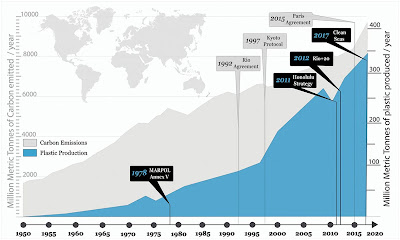When I was young, robots were Robby the Robot (Forbidden Planet, etc.), the unnamed robot in Lost in Space, or The Jetsons’ Rosey the Robot. Gen X and Millennials might think instead of the more malevolent Terminators (which, of course, are actually cyborgs). But Gen Z is likely to think of the running, jumping, back-flipping Atlas from Boston Dynamics, whose videos have entertained millions.
 |
| There's a line-up. Scary or thrilling? |
Alas, last week Boston Dynamics announced it was discontinuing Atlas. “For almost a decade, Atlas has sparked our imagination, inspired the next generations of roboticists and leapt over technical barriers in the field,” the company said. “Now it’s time for our hydraulic Atlas robot to kick back and relax.”
The key part of that announcement
was describing Atlas as “hydraulic,” because the very next day Boston Dynamics announced
a new, all-electric Atlas: “Our new electric Atlas platform is here.
Supported by decades of visionary robotics innovation and years of practical
experience, Boston Dynamics is tackling the next commercial frontier.”
Moreover, the company brags: “The electric version of Atlas will be stronger,
with a broader range of motion than any of our previous generations.”
The introductory video is astounding:
Boston Dynamics says: “Atlas may resemble a human form factor, but we are
equipping the robot to move in the most efficient way possible to complete a
task, rather than being constrained by a human range of motion. Atlas will move
in ways that exceed human capabilities.”
They’re right about that.
CEO Robert Playter told
Evan Ackerman of IEEE Spectrum: “We’re going to launch it as a product,
targeting industrial applications, logistics, and places that are much more
diverse than where you see Stretch—heavy objects with complex geometry, probably in
manufacturing type environments.”
He went on to elaborate:
This is our third product [following Spot and Stretch], and one of the things we’ve learned is that it takes way more than some interesting technology to make a product work. You have to have a real use case, and you have to have real productivity around that use case that a customer cares about. Everybody will buy one robot—we learned that with Spot. But they won’t start by buying fleets, and you don’t have a business until you can sell multiple robots to the same customer. And you don’t get there without all this other stuff—the reliability, the service, the integration.
The
company also announced Orbit™,
software “which
provides a centralized platform to manage your entire robot fleet, site maps,
and digital transformation data.” It
declared: “With a robust team of ML experts shaping our products, we are
prepared to bring impactful AI to market immediately—we’ve already started with
Spot, and it will get even better and faster with Atlas.”
Speaking
of AI, perhaps lost in the Atlas buzz, last week Mentee Robotics came out of two
years of stealth mode to announce MenteeBot,
which the company described
as “an end-to-end humanoid robot
with sufficient dexterity for a wide spectrum of activities in both households
and industrial warehouses.” By “end-to-end” they mean AI-driven.
The company expects a household version and
a warehouse version, with a prototype expected in 1Q 2025.
New research
confirms that, even if robots don’t take your job, they make workers less
happy. “Our key finding is that robots harm work
meaningfulness and autonomy,” the authors say. The key to mitigating that is to give workers
control over the robots, which, of course, runs contrary to having them be
AI-driven. Expect some unhappy workers.
An
interesting perspective comes from Jennifer Pattison Tuohy, writing in The
Verge: Maybe
I don’t want a Rosey the Robot after all.
“The question,” she says, “is should we be working
toward an all-capable, bipedal, human-like bot to take everyday chores off our
hands? The more I think about it — and the more robots I have roaming around my
home — the more I think the answer is no. We don’t need a robot that understands
what we say and can replicate our movements; we need robots that do one job (or
maybe two related jobs) and do them well.”
As she points out, “when my self-emptying dishwasher
breaks, I can responsibly recycle it and get a new one. When my humanoid robot
housekeeper reaches the end of its firmware updates, I’ll have to put it out to
pasture.” That, she worries, “brings with it a whole host of complicated
challenges around the nature of consciousness and the boundaries of humanity.”
That sorts of put the “retirement” of the original Atlas
in a different perspective, doesn’t it?
If we’re going to have all these robots living with us,
we better pay attention to how we socialize them. A new paper argues that
it is people who make robots social, not programming.
“If we want to understand what makes a robot
social, we have to look at the broader scope of the communities around robots
and people’s interactions with each other,” said
Malte Jung, co-author and Cornell associate professor. “It’s not just
about programming a better character for the robot, making it respond better to
human social features, making it look cuter or behaving more naturally.”
Take that in: we’re to the point we need to worry about socializing
robots.
AI is infiltrating our lives faster than we realize and in
ways we don’t realize the implications of yet, and that’s going to happen with
robots too. Whether we’re ready or not.















